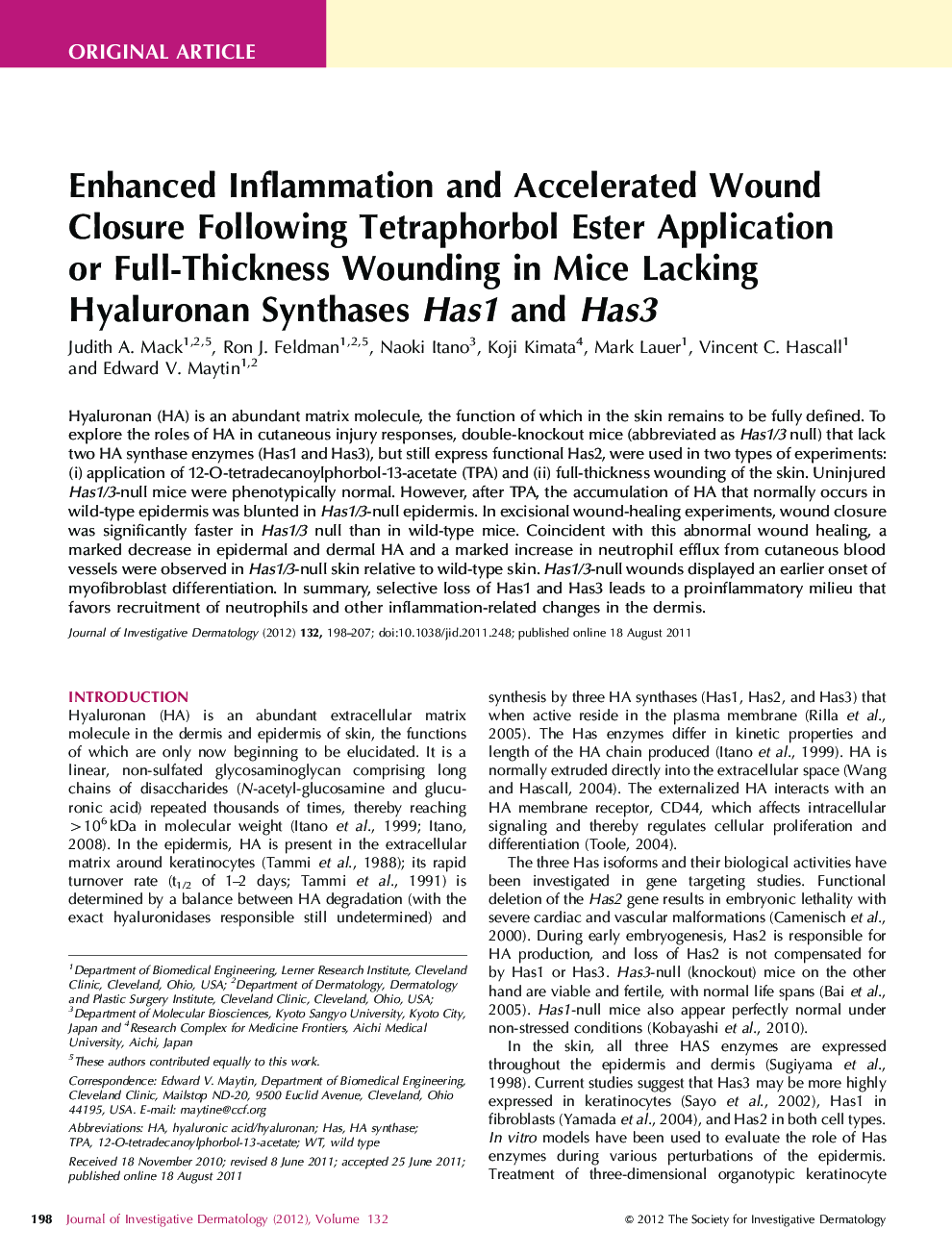| Article ID | Journal | Published Year | Pages | File Type |
|---|---|---|---|---|
| 6077726 | Journal of Investigative Dermatology | 2012 | 10 Pages |
Abstract
Hyaluronan (HA) is an abundant matrix molecule, the function of which in the skin remains to be fully defined. To explore the roles of HA in cutaneous injury responses, double-knockout mice (abbreviated as Has1/3 null) that lack two HA synthase enzymes (Has1 and Has3), but still express functional Has2, were used in two types of experiments: (i) application of 12-O-tetradecanoylphorbol-13-acetate (TPA) and (ii) full-thickness wounding of the skin. Uninjured Has1/3-null mice were phenotypically normal. However, after TPA, the accumulation of HA that normally occurs in wild-type epidermis was blunted in Has1/3-null epidermis. In excisional wound-healing experiments, wound closure was significantly faster in Has1/3 null than in wild-type mice. Coincident with this abnormal wound healing, a marked decrease in epidermal and dermal HA and a marked increase in neutrophil efflux from cutaneous blood vessels were observed in Has1/3-null skin relative to wild-type skin. Has1/3-null wounds displayed an earlier onset of myofibroblast differentiation. In summary, selective loss of Has1 and Has3 leads to a proinflammatory milieu that favors recruitment of neutrophils and other inflammation-related changes in the dermis.
Related Topics
Health Sciences
Medicine and Dentistry
Dermatology
Authors
Judith A. Mack, Ron J. Feldman, Naoki Itano, Koji Kimata, Mark Lauer, Vincent C. Hascall, Edward V. Maytin,
